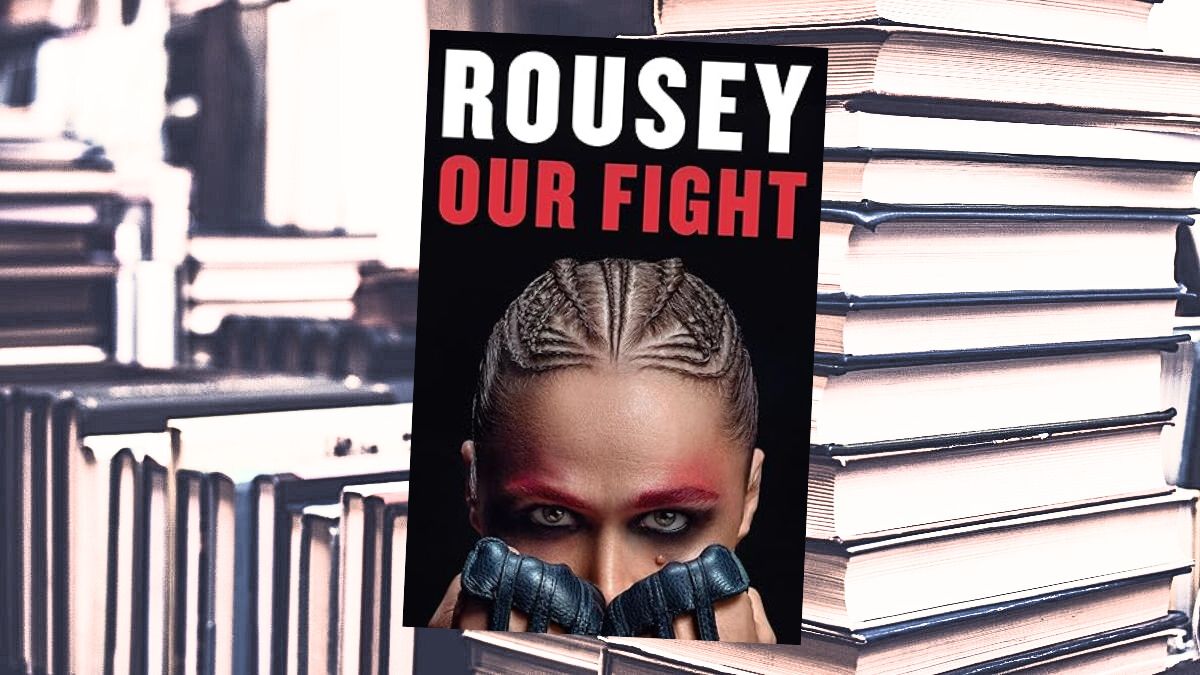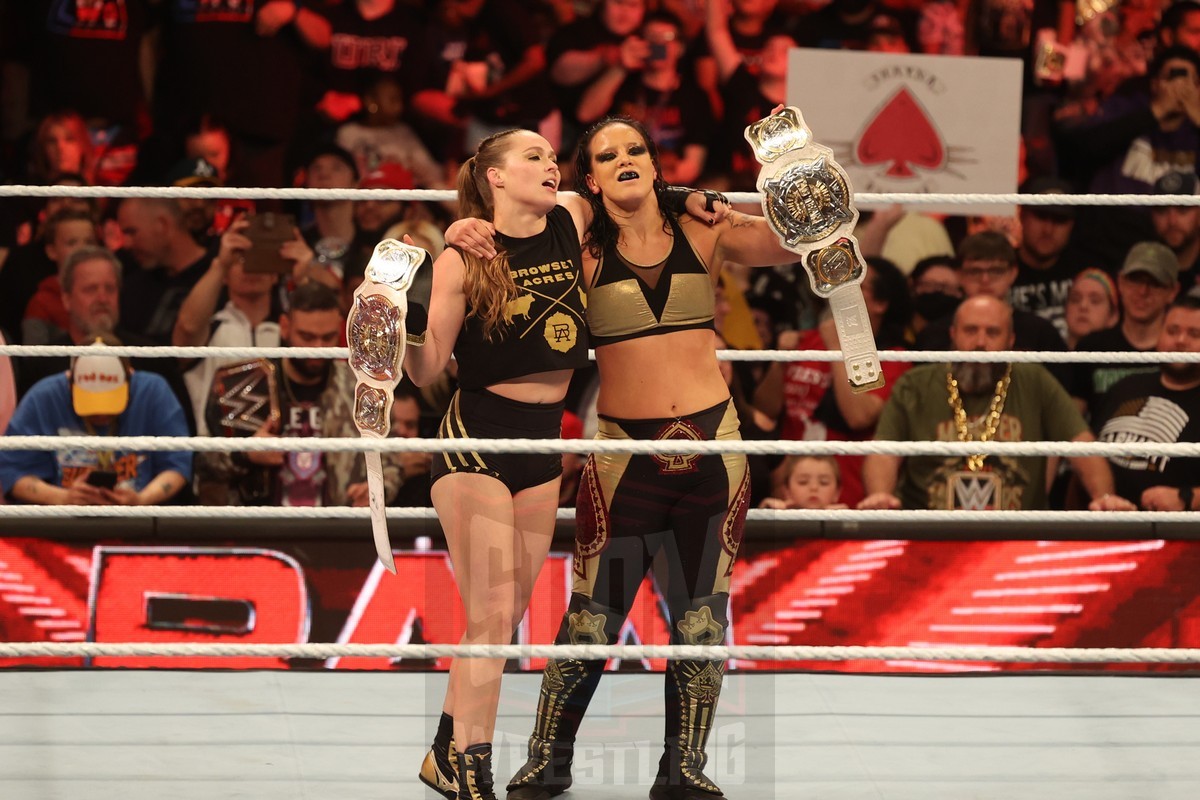Rousey’s “Our Fight” is perhaps the best book yet about the machinations of the WWE

By now, many of the more offensive and condemnatory aspects of Ronda Rousey’s second memoir, Our fightis circulating. Damn, the pre-release material was compelling in itself:
And that only happened after WWE was essentially forced to do it, following a worldwide backlash on social media under the catchphrase #givedivasachance after the Divas were given a total of 30 seconds – less time than it takes most people to read this paragraph – for a nationally televised tag match. Four women were given less time to wrestle together than every single man on the roster got for his intro music alone.
Looking at this information as someone outside the wrestling world, you might conclude that there is a disturbing sexist, patriarchal culture within the WWE. You would be right. I have nothing but respect for the female wrestlers who paved the way for today’s female wrestlers. And nothing but disgust for all the sexist, degrading crap they had to endure.
But Our fightwhich was published in April 2024 and which she wrote together with her sister, journalist Maria Burns Ortiz, has so much more to offer than headline-grabbing reviews.
I would even go so far as to say that this book is by far the best behind-the-scenes coverage of the WWE since JJ Dillon’s book. Wrestlers are like seagulls – from McMahon to McMahonSo, released under Scott Teal’s Crowbar Press imprint, he never got the mass attention that Rousey will. Dillon spoke openly about everything, but he also didn’t burn any bridges, knowing he would continue to work with colleagues in the future, or at least see them again.

Charlotte Flair vs. Ronda Rousey at WrestleMania 38 at AT&T Stadium in Arlington, Texas, on April 2, 2022. WWE Photo
However, Rousey’s book contains so much disturbing and false information for non-wrestling fans that they will be truly appalled and disgusted by WWE as a company in the era before Endeavor’s ownership.
But for those of us who have been following wrestling for years, it’s more of a confirmation than a surprise that the WWE, especially under Vince McMahon, was a pretty chaotic place.
- – “WWE’s Emperor Palpatine… Sometimes it’s hard to know where the evil, unethical, slimy character of Vince McMahon, staged on camera, ends and where the real, ethically questionable, oft-sued and repeatedly accused of sexual misconduct Vince McMahon begins.” (p. 125)
- A lesson from Windham Rotunda, who wrestled as Bray Wyatt (p. 158): “Just so you know, these people are not your friends,” he said. “No matter how nice they are, no matter what they say or how they act, we’ll always be just a piece of meat to them. Come in, make your money and leave.” Shortly afterwards, Rousey writes: “It was the first time someone said out loud what I was beginning to feel.”
- “Before I joined WWE, I knew it was a business, but I got the impression that it was run more like a multibillion-dollar sports franchise or a major entertainment studio than a second-rate circus run by a bunch of showmen. It’s fitting that WWE prides itself on its social media presence and its billion-plus followers, because its elite, high-budget organizational image is about as real as an Instagram filter.” (p. 158)
- “WWE’s official reasoning for requiring everyone to be present at every event is that injuries can happen and that if all the talent is there, they can swap someone out if necessary. The truth is that WWE wants everyone there because they have no idea what they’re doing until the last minute.
…
“There were never really plans, just changes in plans. I knew WWE had scripts, but I never imagined that those scripts – in some cases entire monologues – would be delivered on the day of the taping, only to be replaced three or four times over the course of a few hours, single word changes highlighted in yellow in a continuous series of completely unnecessary changes that ‘Vince wants.’ If you deviated from one or two hastily changed words, you would find out later.”
- “Perhaps the biggest kayfabe is that the WWE is actually run like a functioning company and is not one man’s absolute fiefdom. Nothing is done in the WWE without Vince’s approval. Storylines are scrapped at the last minute on his whim, leaving writers and segment producers to frantically come up with something new. The results of matches change at the last second, sometimes even during the match itself. Segments are cut. Monologues are rewritten. And everyone just accepts it with a shrug.” (p. 163)
- – “The longer I was with WWE, the more I became convinced that the creative team was not only led by a megalomaniac, but also consisted of a room full of guys who were the kids in high school who waited until the last night to do a semester project. Not the guys who could pull it off.” (p. 174)
- “While Triple H looked for talent and potential in the NXT candidates, John Laurinaitis seemed to look for fuckability.” … “Laurinaitis was just a symptom of what was wrong with the WWE.” (p. 212)
- Bruce Prichard was another of Vince McMahon’s buddies. If “What did you say you were doing here?” was a person, it was him. No one knew exactly what his job was or how he got it. He was the guy who carried around a briefcase just to make it look like he was doing something, and yet he had somehow worked his way up to executive producer, hand-picked by Vince because he knew Bruce was the guy you could control remotely through an earpiece. (p. 223)
Having never risen through the indie wrestling system, this is all new to her and a reminder of how strange the business really is.
The Olympian had a unique perspective, albeit in relation to a different sport: “If WWE were to be judged as a truly competitive sport, the best judging system would come from the most unlikely of sources: pair skating. Wrestling is not about brutality, it’s about coordinating your moves in perfect sync and making sure everyone hits their target, even if that means making adjustments on the fly. If the adjustments are perfect, no one will ever know.”
And I liked her take on house shows: “Live events are a throwback to the days of independent circuses. It’s a scaled-down crew in charge of a scaled-down setup, not much more than a couple of giant screens, a few lighting rigs and a ring. … I didn’t know live shows existed before I started performing there regularly, but they quickly became my favorite venue. They feel like the 21st century version of the circus from back in the day, where you come to a small town and everyone comes out excited to watch the show. It’s not about reading overly dramatic commercials, overly produced, constantly changing segments or the glamour of hair and makeup. It’s just about getting out there, doing cool stuff in the ring and interacting with the audience.”

Ronda Rousey & Shayna Baszler at WWE Monday Night Raw at the XL Center in Hartford, CT, on Monday, June 5, 2023. Photo by George Tahinos, https://georgetahinos.smugmug.com
This gives you a pretty good overview of the wrestling side of Our fight but there is a lot more to it – however, it is not a complete biography. My Fight / Your Fightalso written with Maria Burns Ortiz, was released in May 2015 and is more of an autobiography, covering her upbringing, fighting, judo competitions and Olympics, and her journey to the top of MMA and UFC.
To sum it up for those who are reading about Rousey for the first time, I would like to say that Our fight gives a comprehensive overview of all this, better than a Wikipedia entry, but not much more. Which is fine. It works.
It begins with her worst day, a loss to Holly Holm in Australia – and it’s notable that Holm isn’t mentioned by name in this early chapter. Many will see Rousey’s account of her loss in the UFC women’s title fight as one excuse after another, but I’m telling it as one detail at a time and a fascinating journey into what it takes to be a top-tier fight when you’re the champion. I’ve concluded that Rousey was wronged by UFC boss Dana White, but that doesn’t have to be your impression, which means the whole thing is a little open to interpretation.
Then there’s the personal stuff, a relationship that falls apart, with her not mentioning her boyfriend (Brendan Schaub) in writing, but doing so in later appearances. Her love story with Travis Browne is next, and is heartwarming but never becomes saccharine. She bravely reveals a lot, including a miscarriage. Then there’s the birth of her daughter, La’akea Makalapuaokalanipō Browne, who they simply call Pō, which takes place between her two WWE appearances, which is convenient for this narrative.
I really enjoyed it Our fight because I always get something out of reading an autobiography, especially when I learn a lot about a subject I’m not very familiar with, like MMA/UFC.
But wrestling fans will get a real kick from Our fight for the detailed coverage of the WWE drama behind the scenes.
RELATED LINK



:max_bytes(150000):strip_icc()/GettyImages-2153924552-9dc0779af33c47eaaebb4a78a0710bf7.jpg)